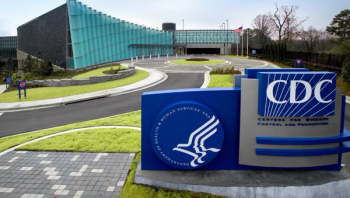
System-wide revenue: A new path for rural healthcare funding | Viewpoint
Shifting the financial success metric from margin per patient to overall health system revenue margin represents a more sustainable strategy.
Rural America faces many nuanced challenges that impact the well-being and economic vitality of its residents, including lower income, economic restructuring, and an aging population.
This demographic also experiences many healthcare challenges that are detrimental to residents. Many patients in rural areas know all too well about healthcare provider shortages, hospital closures, transportation barriers to accessing healthcare as well as a lack of specialized services.
Rural hospitals are trapped in a financial vise, with no immediate relief in sight. They grapple with the same fixed expenses as major medical centers – constant staffing, costly equipment, and regulatory demands – yet operate with a much smaller patient base and a disproportionately high rate of uncompensated care.
This financial strain threatens the overall health and economic stability of entire communities. Since 2005,
Traditionally, many health systems have evaluated financial success based on the margin per patient, a metric that prioritizes the profitability of individual encounters. While useful in large, urban systems with high patient turnover and robust commercial insurance populations, this measure proves inadequate and detrimental for rural hospitals serving lower-income, aging communities.
Rural providers cannot selectively offer only profitable services without severely compromising patient access and community health outcomes.
Finding financial stability beyond fee-for-service models
For rural healthcare providers, shifting the financial success metric from margin per patient to overall health system revenue margin represents a more sustainable strategy.
Unlike the per-patient approach, overall revenue margin emphasizes community-level health outcomes, financial stability, and the provision of essential services – even if individual patient encounters sometimes result in negative margins.
By measuring success on system-wide stability rather than isolated encounters, rural hospitals can better align financial viability with their core mission of serving community health needs comprehensively.
Control what can be controlled: Aligning financial strategies with patient needs
Uncertainty over Medicaid funding and expansion, ACA subsidies, and other drivers are likely not under a rural health system’s control.
For executives, providing the means to make patients’, insured and uninsured, out-of-pocket costs is a financial strategy that can be controlled and materially improved.
One practical approach supporting this focus shift in focus is patient-first financing, a model borrowed from retail sectors but adapted thoughtfully for healthcare. This strategy introduces structured, patient-friendly payment plans when scheduling care rather than relying on traditional, post-treatment billing.
With
Crucially, rural hospitals must avoid becoming financial institutions themselves. Offering in-house payment plans is resource-intensive, administratively complex, and financially burdensome due to carrying costs and collection risks. The goal is to gain the largest portion of balances owing as quickly as possible.
Instead, focus on strategic partnerships with third-party patient financing companies providing a streamlined, scalable solution. A non-recourse based program that is in regulatory compliance with
A reputable patient financing program can provide patients the option of lower monthly payments, sometimes at 0% interest, while hospitals receive immediate or near-immediate payment for services, minus a processing fee. Health systems can thus maximize the total number of patients participating and paying balances quickly, enabling badly needed cash flow and more financially, medically engaged patients.
Early results from some rural systems adopting patient-centric financing prove its effectiveness:
- Improved cash flow and faster revenue collection
- Significant reduction in uncompensated care and medical bad debt
- Increased patient compliance with scheduled preventive and routine care
- Higher patient satisfaction and stronger patient-provider relationships
These benefits directly support the system-wide revenue margin strategy, enhancing immediate financial health and long-term operational stability.
Advancing financial resilience in rural healthcare
While patient-first financing is transformative, it cannot stand alone. Rural hospitals also require concerted advocacy and continued efforts toward improved payer reimbursement rates and Medicaid support in order to maintain coverage for those most in need.
Currently, Medicaid margins for providers are
Rural healthcare leaders must embrace a comprehensive set of financial metrics like operating margins, cash reserves, and bad debt ratios to inform strategic decisions that prioritize long-term stability and community health outcomes. Transitioning to a system-wide revenue approach supported by patient-first financing aligns financial viability with healthcare accessibility, offering a realistic pathway for sustaining rural healthcare.
Ultimately, the shift from per-patient profitability to a holistic revenue model is not merely a financial strategy; it's about preserving the critical lifeline rural hospitals represent for millions of Americans.
By prioritizing accessible, financially sustainable care, rural healthcare leaders can safeguard their facilities' futures and protect the communities they serve.
Meredith Kirchner serves as the chief operating officer at Curae.
















































